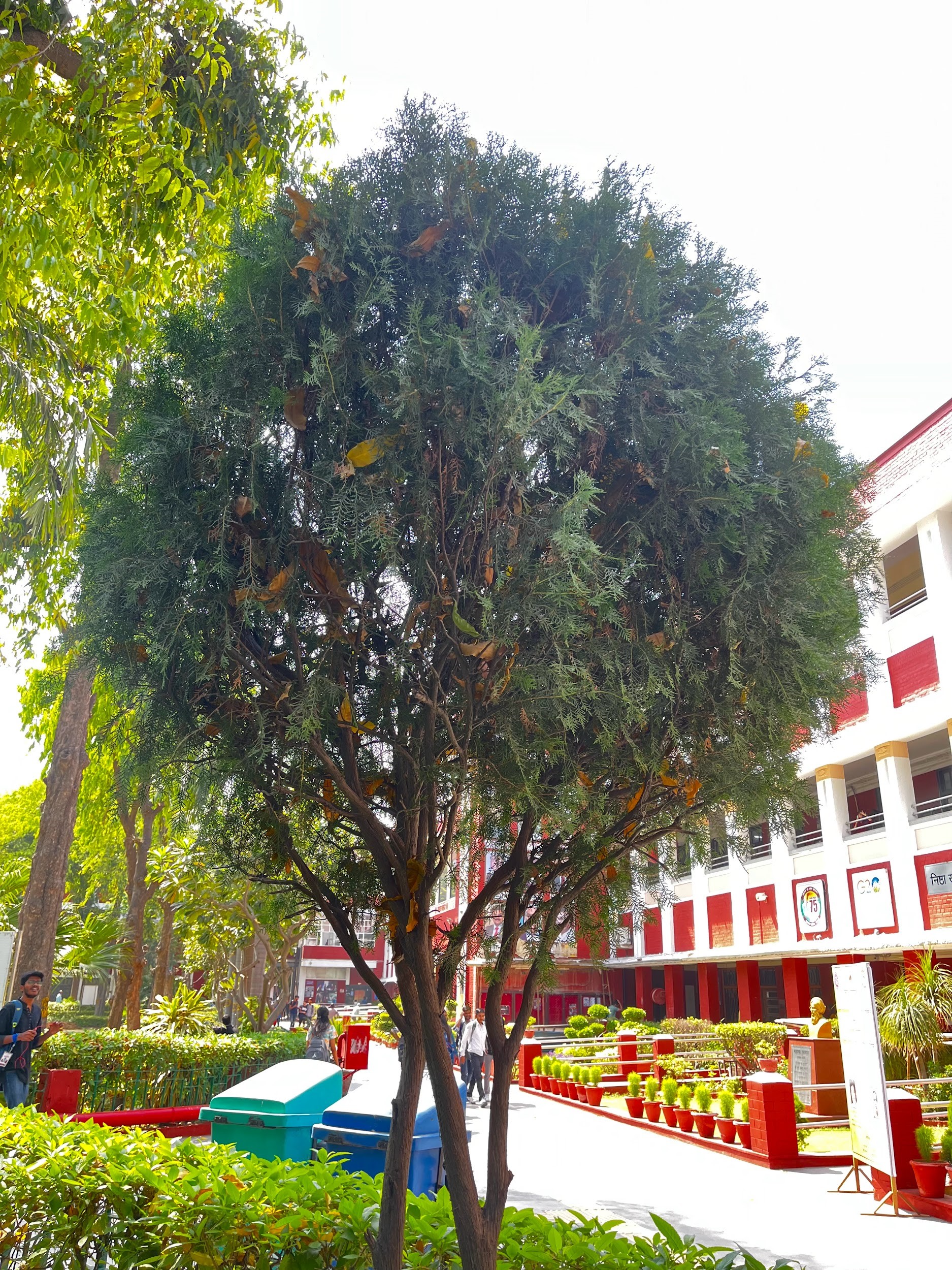
Thuja orientalis
- Scientific Name - Thuja orientalis
- Common Name - मोरपंखी
- Family- Cupressaceae
- Location - G20 lawn
Other Information:
commonly known as Oriental arborvitae, is a species of evergreen tree in the cypress family. It does not produce flowers, but it does have some distinctive characteristics. Six important distinctive characteristics of Thuja orientalis:
- Foliage: The foliage of Thuja orientalis is made up of scale-like leaves that are arranged in opposite pairs along the branches. The foliage is dark green in color and has a glossy appearance.
- Cones: Thuja orientalis produces small, brown cones that are about 1 cm in length. The cones are oblong in shape and have a slightly curved appearance.
- Bark: The bark of Thuja orientalis is reddish-brown in color and has a fibrous texture. The bark becomes more deeply furrowed as the tree ages.
- Size: Thuja orientalis is a relatively small tree, reaching heights of 5-8 meters (16-26 feet) and a spread of 2-3 meters (6-10 feet).
- Habitat: Thuja orientalis is native to eastern Asia, where it grows in a variety of habitats, including rocky slopes, mountain forests, and riverbanks.
- Cultivation: Thuja orientalis is often cultivated as an ornamental plant in gardens and parks. It is a popular choice for hedges and screens due to its dense foliage and compact growth habit. In cultivation, it is tolerant of a wide range of soil types and is hardy to USDA zones 5-9.
